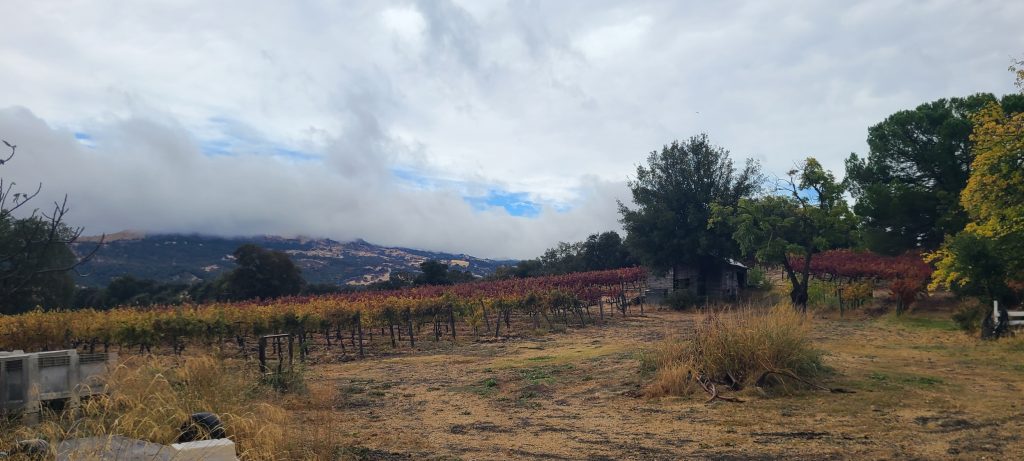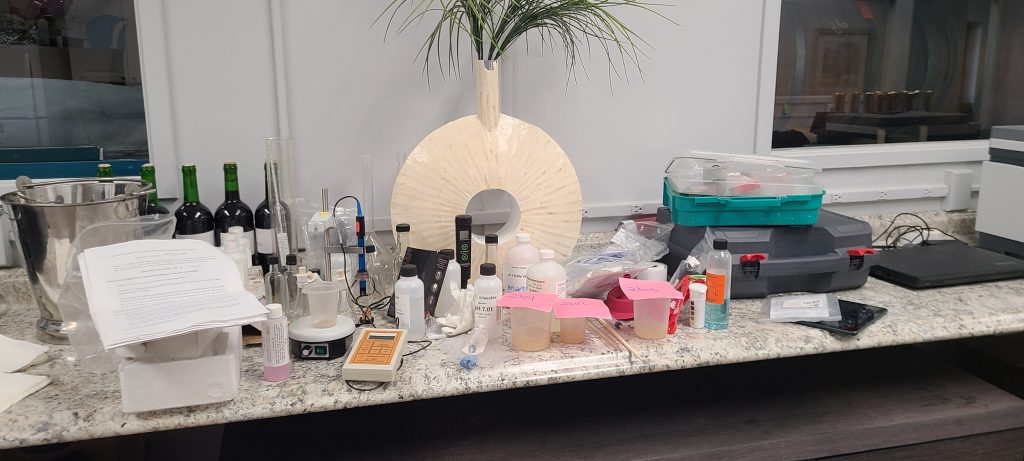The View From The Vineyard 2024

We’re rolling into the end of the year, and both the vines and the cellar (and the growers and the cellar workers) are settling in for a rest before the whole cycle kicks off again. Which makes this a good time to reflect on Harvest 2024.
One of the interesting things about 2024 is how much perspectives on it differ depending on whether you speak to a grower or a winemaker.
If you talk to growers, they will tell you 2024 was a very hard year. The year was marked in particular by two particularly severe heatwaves – one in late July, and one in October. The one in July- before the point that winemakers usually start worrying about the fruit and impacts to flavor development- put the vines under tremendous stress. Attentive growers were able to mitigate this, but even so, the vines never quite recovered. You could even see this out in the vineyards, as the leaves and stems all showed signs of premature senescence, even as the grapes were still ripening. Our growers were pretty unanimous in telling us they expected it to affect the yields next year, too.
You won’t hear the same from winemakers, which is just a fascinating little divergence. Harvest happened at about the expected time, with no particularly awful heatwaves at the most delicate time (with the exception of the later-ripening varietals, which got hit hard in October). If you got your grapes picked in September as a winemaker, you likely saw the grapes come in about right on schedule, at around the right sugar and pHs as normal, with the expected amount of flavor development, so winemakers tend to view the year as a bit of a nail-biter, but one that in the end, came out par for the course.
And yet the marks of 2024’s particular growing season do show up in the cellar. While pHs were about the same, maybe a bit higher than normal, the total amount of acidity was coming in about half of normal across the board, even for the early ripening varietals that missed the later heat wave. This sounds like a minor thing, perhaps, but it has major sensory effects on the wine.
There were also some impacts on the aromatic whites, especially, in my experience, the terpene heavy ones like Muscat. (Again, I’m not sure what the causes and effects are here, and perhaps it is coincidence, but I’ve seen it across several different wines and not just ours). Take for example our 2024 Muscat. I know these grapes, I’ve gotten grapes and juice from them for several years now, and they are always marked by an incredibly floral nose with a chaser of bergamot and citrus. But in 2024, these are flipped. They’re still both present, but now the spicy citrus of bergamot is lead singer and the honeysuckle is providing backup vocals, which is just very fun. I often say that wine is the distilled essence of the year, and this is the proof.
In some not too distant future, we’ll be able to set up a vertical of these in the future and be able to taste the differences in the summers. Also, as a note, this is a good thing to keep in mind when buying wine from 2024! While 2023 was an excellent vintage all around, I would probably as a rule of thumb avoid buying late-ripening varietals from Napa and Sonoma (e.g. Cabernet, Merlot) blind because anything picked in October got absolutely fried on the vine. We know of a winery that picked what should have been 50 tons of grapes that had desiccated so much and lost so much crop that the grapes came in at 17 tons.

